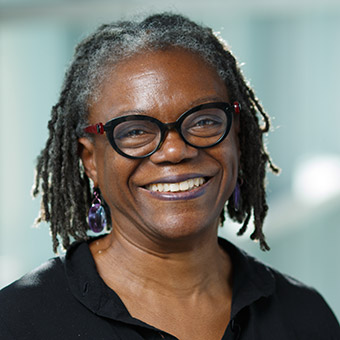Lesson Plan: From Article to Angle
African and African American Studies
Objective
When students have to write about a scholarly article, it can be difficult to determine how to make an argument independent of a summary of the article. This lesson was meant to demonstrate how they can find their own "angles" on the text.
Estimated Time
25 minutes
Work Completed Before Class
Students should already be in the process of working on this paper, which is a five page analysis of a scholarly article or non-fiction chapter from "Decolonising the Mind" by Ngugi Wa’Thiongo. They have chosen the article/chapter they want to write about, but their goals are still very broad.
-
- I begin by discussing the essay requirements briefly. I reinforce the fact that this essay cannot be simply a summary of the author’s argument. Students need to have a reason ("motive" would be the UWS word) for justifying five pages of words. They need to have an "angle" on the article.
- Then, I have students free write for a couple of minutes on their chosen topic for the paper. Meanwhile, I am writing the following "angle" categories up on the board:
- Find an important quotation (provocative, complicated, interesting, left unexplained) that you will analyze.
- Identify a theme from the course.
- Identify a theme in the article.
- Identify a problem in the article.
- Identify a mystery in the article.
- ? [Do students have another idea?]
"All nations are gendered; all are invented; and all are dangerous — dangerous not in Eric Hobsbawm's sense of having to be opposed but in the sense that they represent relations to political power and to the technologies of violence" (89). How does she elaborate the danger of nationalisms throughout the article? And how might it relate to one of the novels from the course?
Women's and men's work in the literature. "If women have come to do men’s work, men have not come to share women's work" (110). How does she deal with "work" or "labor" in the article? How does "work" relate to nationalisms?
Nationalism (critique): A new kind of approach to studying nationalism — does she fulfill it? "A feminist investigation of national difference might, by contrast, take into account the dynamic social and historical contexts of national struggles; their strategic mobilizing of popular forces; their myriad, varied trajectories; and their relation to other social institutions. We might do well to develop a moretheoretically complex and strategically subtle genealogy of nationalisms." (99).
Her analysis of nationalisms and feminisms in SA — Afrikaner, ANC, what about the rest? Too essentialist?
"Agon" — her frequent use of the word in the article; from the ancient Greek drama or comedy, etc. "struggle" or "contest"; protagonist, antagonist. What purpose does this particular term serve? Why this term rather than "struggle" or "contest?" Does it have to do with her concerns with the performative?When they are finished, I ask them to report on their topics/angles one by one and to determine whether it fits in a category. For the most part, the topics are very broad and usually reflect an engagement with the article’s argument, but not the student's own "angle" on it. The key is to get them to think about how they might find that angle using these categories and what kinds of questions the angle might generate. I have some ready-made examples, which are as follows (all from Anne McClintock's "Not Even in a Future Heaven"):
These examples illustrate to students how many different angles can come out of a single article.
- Finally, I hand out a worksheet (below) and have students work in pairs to see how "Your Angle" might eventually lead to a "Provisional Thesis."
Worksheet: Second Paper
Your Angle:
Why is it important/worth reading about?:
Questions you might ask about the article in terms of your angle:
Points you might make:
1.
2.
3.
4.
Evidence you might include (e.g., quotes):
1.
2.
3.
4.
Provisional thesis:
Anna Jaysane-Darr and Faith Smith
Developed at Brandeis University through a grant from the Davis Educational Foundation
